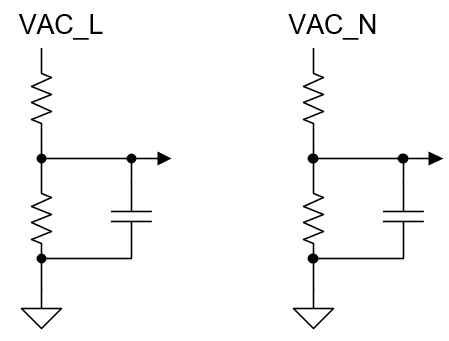TIDT369B November 2023 – July 2024
1.3.3 Input AC Voltage Sensing
The line and the neutral voltages are sensed by resistor divider to the ground of the board as shown in Figure 1-4. The two readings are subtracted on the controller to get the Vac sensing.
 Figure 1-4 Input AC Voltage
Sensing
Figure 1-4 Input AC Voltage
Sensing